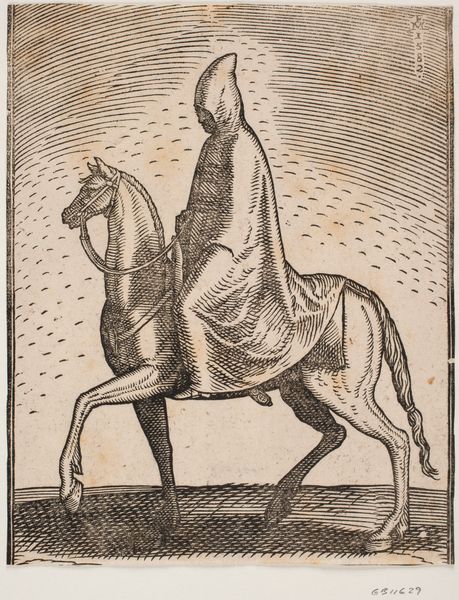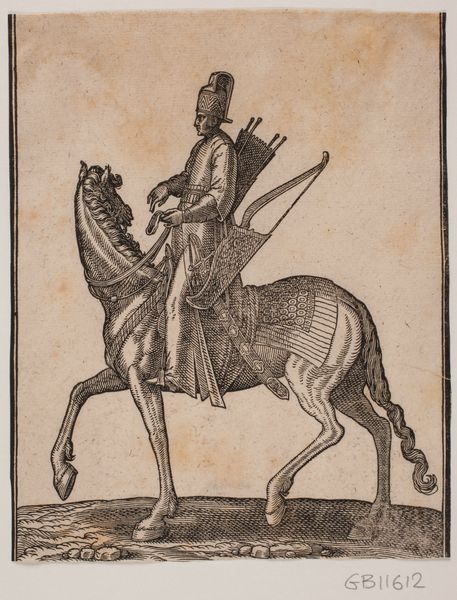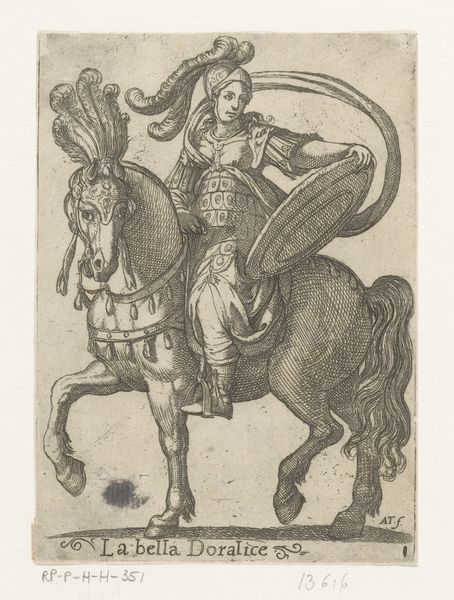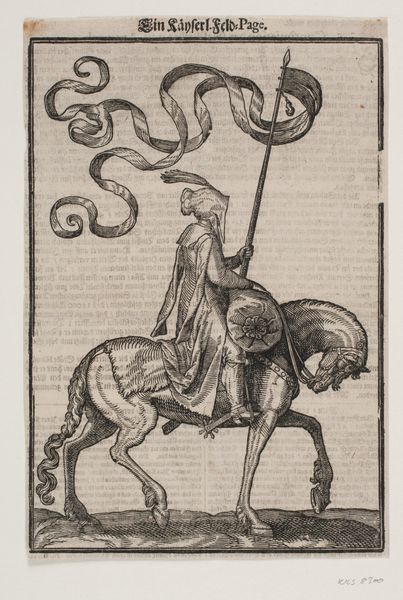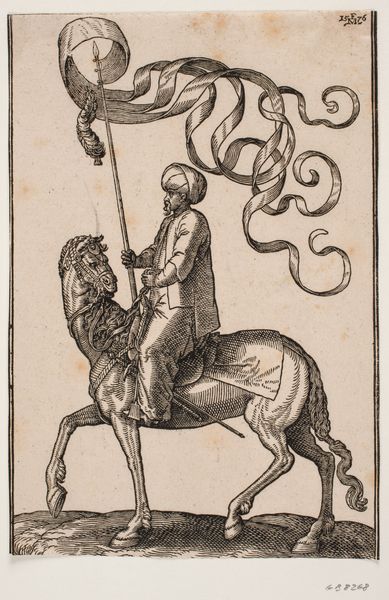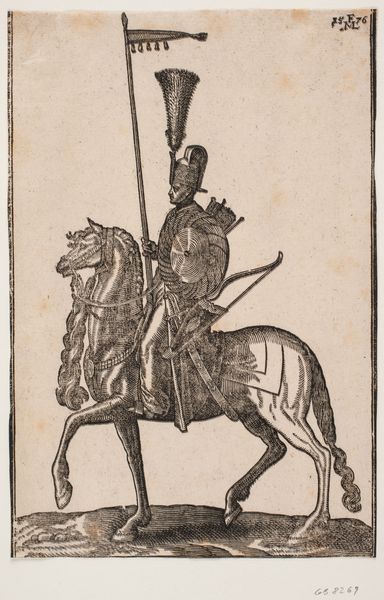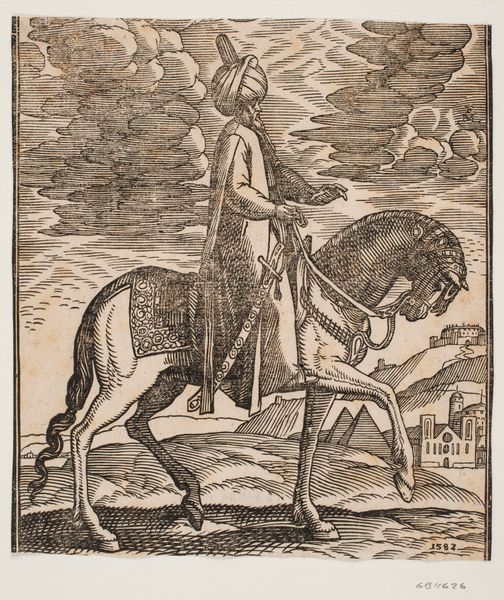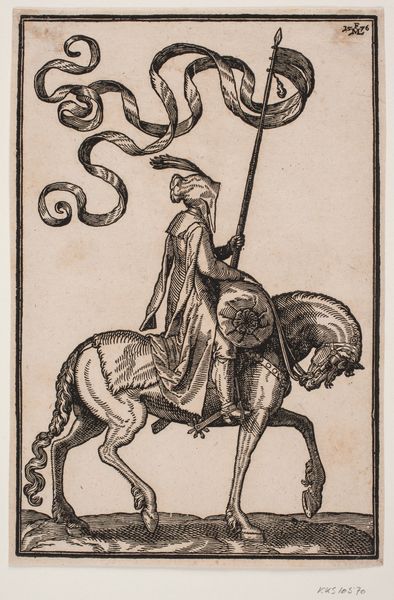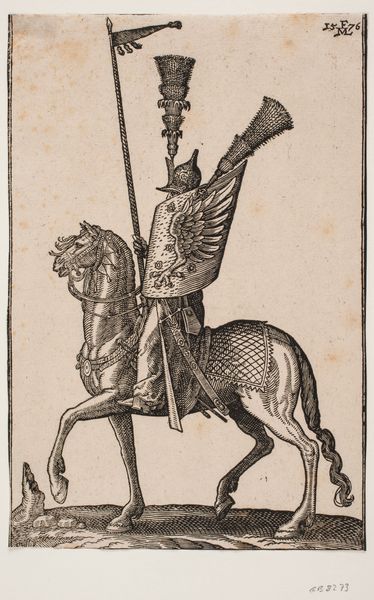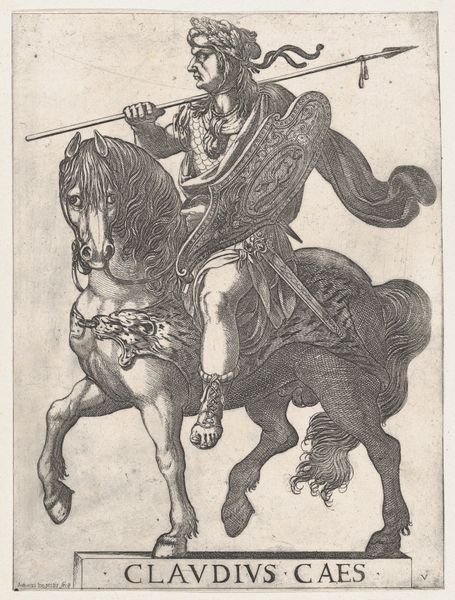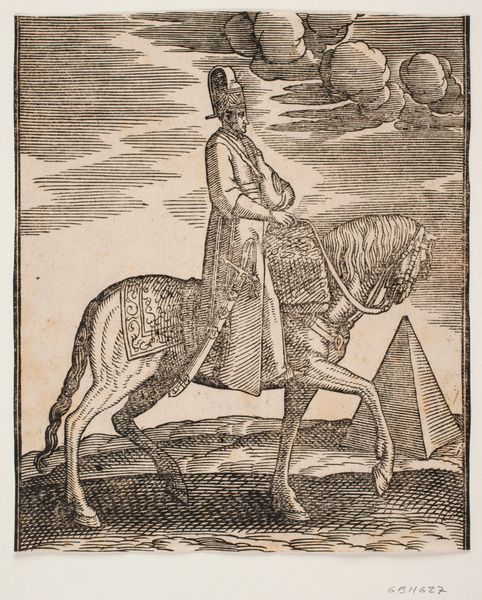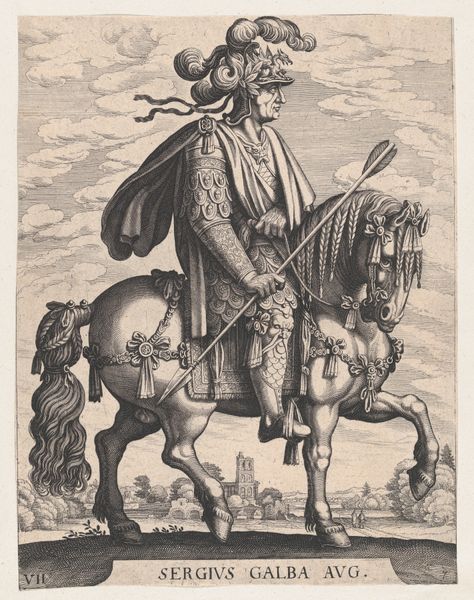
Bereden standartbærer, profil mod v.; han bærer sværd ved sin v. side 1576
0:00
0:00
drawing, print, woodcut, engraving
#
portrait
#
drawing
# print
#
figuration
#
11_renaissance
#
woodcut
#
line
#
islamic-art
#
engraving
Dimensions: 233 mm (height) x 156 mm (width) (bladmaal)
Curator: Here we have a print made in 1576 by Melchior Lorck. It’s titled "Bereden standartbærer, profil mod v.; han bærer sværd ved sin v. side", depicting a mounted standard-bearer in profile. The work showcases Lorck's skill with line, using a meticulous style across a woodcut medium. Editor: My first impression is one of monumental restraint. The figure and horse are rendered with such exacting detail that the overall feeling is one of power held in check. There's a curious tension between delicacy and force here, the stark, nearly complete absence of tone making me wonder what political machinations this portrait had a role in. Curator: That is astute, noting the tension. The engraving captures not just the likeness but also elements deeply symbolic in Islamic art and power structures of the time, something Lorck studied extensively. He portrays the figure's regalia with intense accuracy, suggesting this isn't just any standard-bearer. Note the curves of the saber on the figure's waist, positioned there, not necessarily for ready access in battle, but more so as a clear signifier of status. Editor: I'm drawn particularly to the flag, or standard, that the rider carries. Its voluminous folds are given dimension simply through the line work. And the subject is situated such that the background *is* the flag itself—that object's meaning taking up the symbolic space of an entire ground, demanding your full and considered attention. Curator: Precisely, it dominates the composition. In iconographic terms, flags represent identity and sovereignty. The bearer is therefore more than a soldier. Editor: Seeing it deconstructed as line in this way gives an immediacy that obscures the centuries between the creation and now, placing the semiotics of line on an even playing field with symbol—the two work to serve one another as well as vie to come out as dominant in how this image makes one feel. Curator: Indeed. Lorck masterfully integrates line and symbolic weight. His print, with its deliberate strokes, captures more than just an image; it holds a coded language for its era. Editor: It's an interesting study in contrasts and the interplay of restraint and symbolic meaning—qualities still pertinent today. The enduring resonance of this 16th-century print owes as much to its impeccable artistic construction as to its loaded symbolism.
Comments
No comments
Be the first to comment and join the conversation on the ultimate creative platform.
